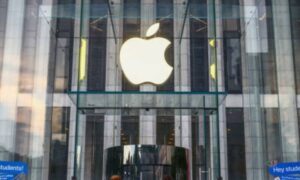In a world where communication is paramount, Apple’s WiFi-Calling feature has emerged as a game-changer. This innovative technology, deeply embedded in the iOS ecosystem, offers a robust solution for users seeking enhanced voice communication over WiFi networks.
In the fast-paced world of technology, behind every groundbreaking innovation, there is a visionary engineer who plays a pivotal role in bringing transformative ideas to life. Anil Naik, a seasoned engineer with more than nine years of experience at Apple, has been one such driving force in the development of the company’s WiFi-Calling feature. His remarkable contributions have not only elevated the user experience but have set a new standard for communication in the digital age.
Naik’s journey at Apple began over nine years ago when he joined the company’s ranks as an engineer. Little did he know that his work would eventually shape the way millions of users around the world communicate. WiFi-Calling, a feature that bridges the gap between cellular and WiFi networks, stands as a testament to Naik’s dedication and ingenuity.
Expanded Coverage
WiFi networks are often more widespread and accessible than cellular networks. By utilizing WiFi for calls, users can now communicate in locations where cellular signals traditionally struggle, such as remote areas or buildings with thick walls. This expanded coverage ensures that users stay connected even in challenging network conditions.
Carrier-Grade Quality of Service (QoS)
While WiFi Calling builds on VoIP technology, it stands out by prioritizing Carrier-grade Quality of Service (QoS). Unlike traditional VoIP services, Apple’s WiFi Calling is engineered for consistently high call quality, meeting stringent standards set by both users and mobile carriers. This focus on Carrier-grade QoS guarantees crystal-clear calls and unwavering reliability over WiFi networks.
Carrier Collaboration
Implementing WiFi Calling involved close collaboration with mobile carriers worldwide. Ensuring that this feature seamlessly integrated with carriers’ networks and billing systems was a complex task. This collaboration set the stage for broader industry adoption.
Apple OS Ecosystem
WiFi Calling is deeply integrated into the Apple ecosystem, using their iCloud pairing and connected infrastructure. This means it works not only on iPhones but also on iPads, Macs, and even Apple Watch. This level of ecosystem-wide integration is a unique advantage that enhances user convenience.
Emergency Services Support
Apple took special care to ensure that WiFi Calling supports emergency services. When users make emergency calls, their location information is accurately transmitted to emergency responders, even when using WiFi.
Wi-Fi Handover
WiFi Calling doesn’t just switch between cellular and WiFi; it can also transition between different WiFi networks seamlessly. This feature is particularly valuable in environments with multiple WiFi access points.
Battery Efficiency
To minimize battery drain during WiFi Calling, Apple engineers optimized the technology to consume minimal power, ensuring that users can enjoy longer talk times without significantly impacting battery life.
Community Wi-Fi Networks
Apple’s WiFi Calling technology can also work with community WiFi networks, such as those offered in hotels or airports. This flexibility enhances the user experience when traveling.
Anil Naik, reflecting on his role in this remarkable journey, shared his personal insights and opinions:
“In my role as the lead engineer, I’ve witnessed the profound impact of WiFi Calling on the communication landscape. It’s not merely a feature; it’s a solution that empowers users with dependable, high-quality voice communication. This innovation underscores Apple’s commitment to enhancing the user experience and setting industry standards in telecommunications.”
Improved Call Quality
Calls made over a stable WiFi connection typically deliver superior voice quality compared to traditional cellular calls. WiFi networks offer higher bandwidth, enabling high-quality audio transmission, reduced background noise, and more natural-sounding conversations. The focus on enhanced call quality is a hallmark of WiFi Calling.
Cost Savings
For international travelers, WiFi Calling is a valuable cost-saving feature. Users can connect to WiFi networks abroad and make calls without incurring expensive international roaming charges. This financial benefit is particularly appealing to those who frequently travel.
Seamless Handovers
WiFi Calling is designed to seamlessly transition between WiFi and cellular networks as needed. Whether users are indoors with WiFi coverage or outdoors with cellular signal, the transition is smooth and uninterrupted, guaranteeing a consistent calling experience.
Reliable Indoor Coverage
WiFi Calling is a game-changer in indoor environments where cellular signals may be weak or obstructed. By relying on WiFi networks, it ensures dependable indoor coverage, reducing the likelihood of dropped calls, especially in homes and offices.
Load Balancing
In regions with congested cellular networks, WiFi Calling can help alleviate network congestion by offloading voice traffic to WiFi. This not only enhances call quality but also optimizes the overall network performance for cellular data users.
Accessibility
WiFi Calling serves as an essential accessibility feature, benefiting individuals with hearing impairments. The improved call quality over WiFi networks enhances the clarity of conversations, making communication more accessible to a broader user base.
Anil Naik also highlighted his significant contributions in the development of WiFi Calling:
“In my role as the Tech Lead, I’ve played a multifaceted role, with contributions extending across various domains. I was involved in the development of the WiFi Calling algorithm, ensuring Carrier-grade Quality of Service, seamless network handovers, global expansion, and deep ecosystem integration. Our commitment to excellence and user feedback have been the driving forces behind this innovation.”
Apple’s WiFi Calling is a testament to the power of innovation and engineering. It has not only transformed how we communicate but has set industry standards and influenced the broader adoption of Voice over WiFi technologies. Anil Naik’s insights provide a unique glimpse into the behind-the-scenes work that made this remarkable feature a reality. As we move into an increasingly interconnected world, WiFi Calling stands as a beacon of reliability, quality, and convenience in the realm of smartphone connectivity.



































